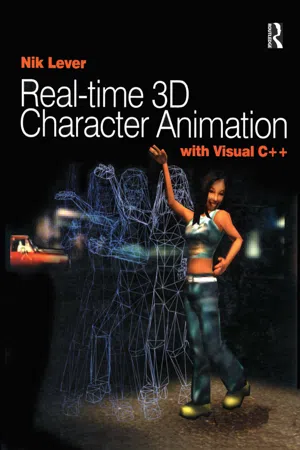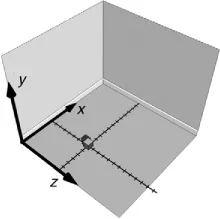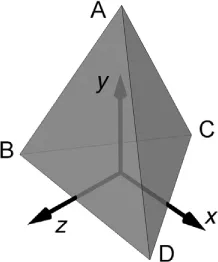
- 496 pages
- English
- ePUB (mobile friendly)
- Available on iOS & Android
Real-time 3D Character Animation with Visual C++
About This Book
Do you have some experience and a reasonable knowledge of C++ and want to write your own computer games? Have you ever looked at a PC or Playstation (R) game with characters running and leaping through an exciting landscape and wondered how it was done? If so then this book will give you all the information you need to achieve this goal, whether you are a hobby programmer, student or even a professional wanting to add that third dimension to your website.Nik Lever takes you through the journey from the basics of 3D manipulation all the way to morph objects and sub-division surfaces. On the way you get Visual C++ project files to study and software that runs on the Windows desktop. The downloadable resources give you a full-featured development environment for 3D character animation, so even if you find some of the maths and the code hard to follow straight away you can still create your own games. The game engine (Toon3DCreator) provided free and fully functional on the downloadable resources, even has an ActiveX control that allows you to distribute your work on the Internet. All source code for Toon3D is included on the downloadable resources. You will also get an insight into the artist's problems; learn how to keep the characters interesting while not exhausting the game engine.Understand the complete picture and make the most of your skills to help you succeed in, or break into the computer gaming industry with this comprehensive guide to programming for real-time 3D character animation.
Frequently asked questions
Information
1 3D basics
Describing 3D space


Transforming the box
Describing an object
B: [–1.0, 0.0, 0.6]
C: [ 0.0, 0.0, –1.1]
D: [ 1.0, 0.0, 0.6]

Table of contents
- Front Cover
- Half Title
- Dedication
- Title Page
- Copyright
- Contents at a glance
- Supplementary Resources Disclaimer
- About the author
- Introduction
- Chapter 1: 3D basics
- Chapter 2: Drawing points and polygons the hard way
- Chapter 3: Drawing points and polygons the easy way with OpenGL
- Chapter 4: OpenGL lighting and textures
- Chapter 5: Creating low polygon characters
- Chapter 6: Texture mapping
- Chapter 7: Setting up a single mesh character
- Chapter 8: Keyframe animation
- Chapter 9: Inverse kinematics
- Chapter 10: Importing geometry and animation from Lightwave 3D
- Chapter 11: Importing geometry and animation from 3DS Max
- Chapter 12: Motion capture techniques
- Chapter 13: Collision detection
- Chapter 14: Using morph objects
- Chapter 15: Using subdivision surfaces
- Chapter 16: Using multi-resolution meshes
- Chapter 17: The scene graph
- Chapter 18: Web 3D, compression and streaming
- Appendix A: Using Toon3D Creator
- Appendix B: MFC Document/View architecture – a short introduction
- Appendix C: Further information
- Index